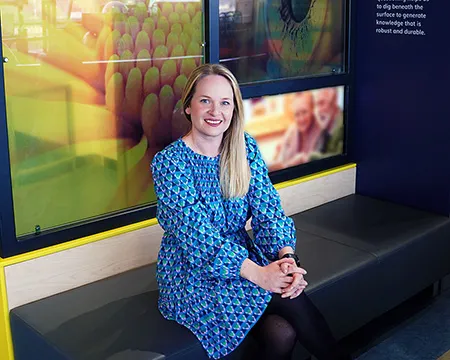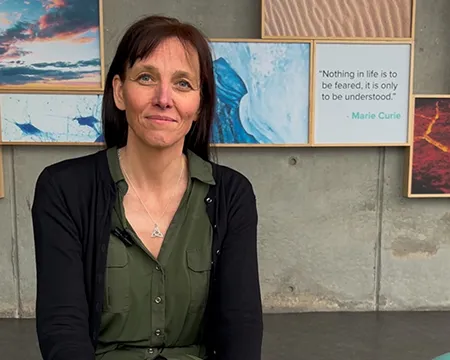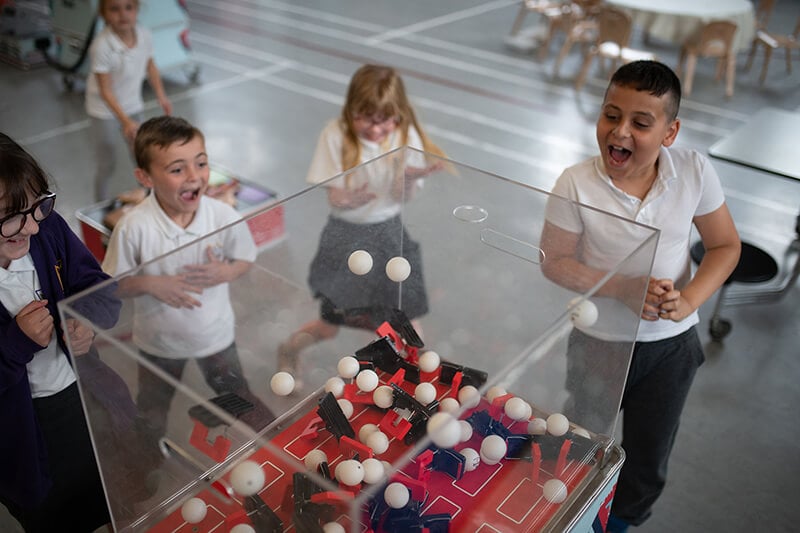Breathing Fresh Life into the Clyde

Glasgow Science Centre is delighted to announce the installation of floating wetlands in the Canting Basin, part of the old Prince’s Dock, the large, square area of water that flows in from the River Clyde. The addition of floating wetlands further develops the science centre’s bid to enhance the surrounding natural environment, having completed work on the outer area and moat in 2021.
History of Prince's Dock on the River Clyde
All that is left of Prince’s Dock now are the Graving Docks and Canting Basin, which opened in 1900, primarily to give ships enough room to turn around. The dock closed in the early 1970s and much of it was filled in for the hugely popular Glasgow Garden Festival in 1988.
This area of Glasgow gives us an idea of what life was like in the past – long before the science centre opened in 2001. The construction of these docks began back in 1869 and was completed in 1898. At the time, they were the country's deepest graving docks, capable of holding the largest ships afloat. They were used to carry out maintenance and to repair the hulls of ships. The Paddle Steamer Waverley, which still docks outside the science centre, was repaired here in 1977 after colliding with rocks. The addition of the floating wetlands will fill a historical part of Glasgow with new life.
Wetland biodiversity in the Clyde
The science centre teamed up with NatureScot, Clyde Marine Planning Partnership and the University of Glasgow to bring more biodiversity to Govan. The wetlands themselves are nearly 200 square metres in size and will feature over 2,000 plants and trees, as well as nesting spots to attract local birds. Visitors to the area can spot wildlife via an observation area with free-to-use binoculars and interpretation boards just outside the science centre. The wetlands are anchored in place by four cables, which allow the platforms to rise and fall with the tide.
By installing floating wetlands in the Canting Basin, we are providing an opportunity to increase the biodiversity in the Clyde. The basin is currently unused, with limited specific space for wildlife to build their own habitat. The forest of roots will provide a shelter and a safe feeding ground for local fish and will also create an ideal habitat for millions of micro-organisms, which will use nutrients in the water as a food source. These handy micro-organisms will also help to clean the water. Scientists and students from the University of Glasgow will be able to use these wetlands as a ‘living laboratory’. This gives us the chance to examine the impact that plants have on local animal populations and monitor any changes in the water conditions.
Importance of biodiversity
Biodiversity is incredibly important for humans – we rely on biodiversity for clean water, for food, and for medicine. Without biodiversity, our entire food chain, and way of life, would collapse. If we removed even a tiny part of the food chain, or eco-system, this would have an enormous impact. That is why the destruction of wetlands across the world is such a huge problem for life on earth.
Wetland biodiversity is particularly important because it allows nature in our waters to be productive, resilient, and adaptable to environmental change. Hopefully, in a few months, we will see lots of animals like fish, moorhens, seals, ducks, and cormorants on the wetlands. Local anglers who attended the installation of the wetlands have even seen creatures like otters and porpoises in the Clyde. Perhaps we’ll be lucky enough to spot these more often now the wetlands have been installed.
Greening the grey
Dr Gillian Lang, Director of Experience Development at Glasgow Science Centre, said: “we are thrilled that these floating wetlands have now been installed and we can't wait to see diverse creatures finding a home for themselves outside the science centre. It has been fantastic collaborating with both NatureScot and the University of Glasgow to green the grey in this area. We hope that these wetlands encourage community conversations around the future vision of the Clyde.”
Passers-by in early March gathered outside to watch cranes lift the bases into the water, while a team bravely stepped onto the wetlands from small boats – carefully keeping their balance to add a planting substrate of clay and woodchips.
So, if you are visiting soon, come on down to see the wetlands for yourself – who knows what you might spot amongst the plants!
This project was supported by the Scottish Government’s Nature Restoration Fund, which is facilitated by the Scottish Marine Environmental Enhancement Fund and managed by NatureScot.
Further Information
This blog post by Patrick Wallace is adapted from an article by Glasgow Science Centre that first appeared in Glasgow Times in March 2023.
Floating Wetlands at Glasgow Science Centre
Discover the floating wetlands at Glasgow Science Centre.






